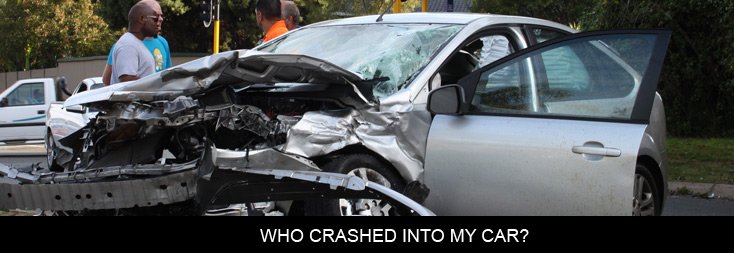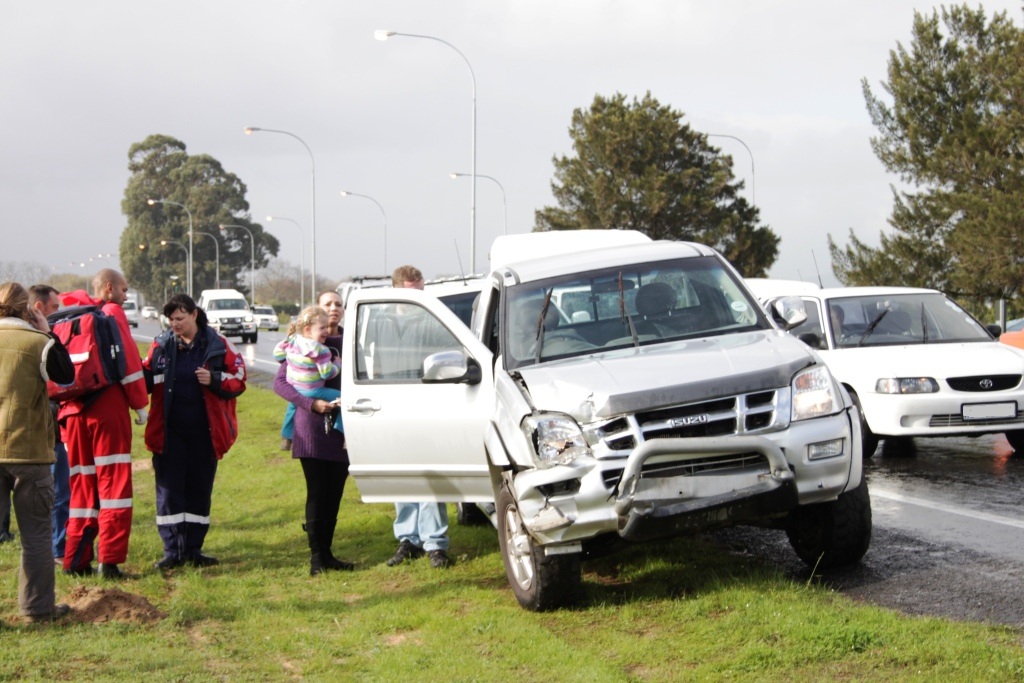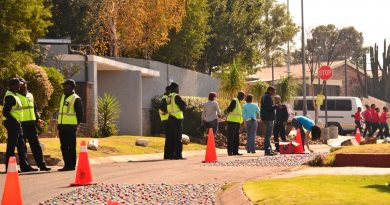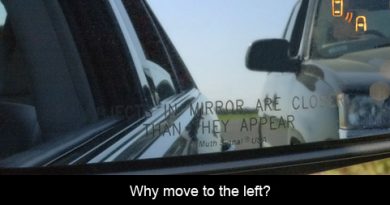How do I establish the details of the driver who crashed into my car?
Do you know who crashed into your car and should you believe the other driver when he provides his contact details? This is a scenario often facing South African road users. With so many cars uninsured it might happen that the other driver is trying to evade justice with a few lies – and we need to ensure that we make the right person accountable for the damage.
We would like to advise our vehicle owners with reference to a recent question raised to the Arrive Alive website.
Question:
“I would like to find out what the correct procedure, according to South- African law, is for getting the details of another driver that was involved in the same accident as one of my drivers? I work for a company that is on the road all the time. I was called out on Thursday – 04/08/2011 to the scene of an accident where one of our drivers bakkie was hit by a truck that skipped a robot.
I usually take the details of the other driver and then send it in to our insurance. On this occasion i didn’t because there where metro police on the scene when i got there. (they advised me not to take details) They simply said that i must go to there offices and get a “case” number, on monday 08/08/2011 i went off to there office’s to collect a “case” number,whereby they could only give me a “pn” number!
When i got back to our offices, i was reprimanded, because i didnt get any details…. i then explained to my boss that they were to give the “pn” number to the insurance and they would sort it out and get the relevant information….. Was is wrong in doing this? I would appreciate some sort of correspondance from your side,explaining what the correct procedure is/was…. when involved in a car accident…”
Due to the fact that people are entitled to privacy and protection from criminal activity, there is no way for a civilian to establish the details of the owner of a vehicle based on the number plate that it carries. If you think about it, this makes perfect sense and I am quite sure that you would not want some traffic authority or other entity with access to the eNaTIS system arbitrarily handing out your details to anyone who asks for them.
Most insurance companies require claimants to furnish the details of the other driver and vehicle involved, including any details of the third party’s insurer and it is a common misconception of most people that because the traffic authorities or police were in attendance at that time that they do not have to bother with recording this formality. In my experience, traffic authorities are particularly obstructive in providing the details of another party involved in a collision to anyone other than the SAPS or an insurance company. Whilst this is unnecessarily obstructive, there is not much that one can do once this situation has arisen.
You can inform your employers that they can jump up and down as much as they like, but nothing that they or you will be able to do will sway the traffic authority concerned. They will not even tell you if they will be bringing charges against the other driver, which of course should happen if that driver ignored a red traffic light which caused the collision as this is classified as reckless or negligent driving. However, at this stage, there is nothing that you can do to get these details and your insurance company is going to have to do so.
In terms of section 61 of the National Road Traffic Act, any person who is involved in a collision or is duly authorised to request the details of the other party involved in a collision must be furnished with such details. The exact section that applies is section 61(1)(e) which reads:
61(1) “The driver of a vehicle on a public road at the time when such vehicle is involved in or contributes to any accident in which any other person is killed or injured or suffers damage in respect of any property or animal shall-”
(e)“If required to do so by any person having reasonable grounds for so requiring, give his or her name and address, the name and address of the owner of the vehicle driven by him or her and, in the case of a motor vehicle, the registration or similar mark thereof;”
It is my advice that whenever a situation similar to this one arises in the future that you obtain the details of the other driver involved immediately, regardless of whether a traffic officer has done so or not. It is far from unreasonable for anyone to ask for these details and anyone who refuses to furnish them is not only being obstructive but is also guilty of an offence under the National Road Traffic Act.
Best Regards,
Howard Dembovsky
National Chairman – Justice Project South Africa (NPC)
Conclusion
We would like to advise that you use modern technology – and especially the benefits of the camera in your cellular phone. In the section of the best photo to take at the accident scene we advise the following: “Also try to ensure that the photographs clearly show number plates on vehicles.
We would like to advise that you capture not only the number plates but also the license disk on the window. This will ensure that when a case number is opened, the registered owner of the vehicle can be traced on the eNaTIS system.
Also view:
Best Photographs to take at the Scene of An Accident
Legal Duties and Advice at scene of an Accident





